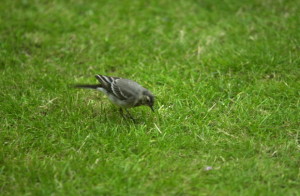 When you think of birds, you may not think they would be pests you would need to control at your home. However, this is not true. While birds may seem harmless, they become a problem when there are many of them near your home, or if they are taking over your yard. Truthfully, many pests are that way – they’re not a problem until there are so many of them that they overwhelm you. This article will help you understand what these pests are and how to rid your home of them.
When you think of birds, you may not think they would be pests you would need to control at your home. However, this is not true. While birds may seem harmless, they become a problem when there are many of them near your home, or if they are taking over your yard. Truthfully, many pests are that way – they’re not a problem until there are so many of them that they overwhelm you. This article will help you understand what these pests are and how to rid your home of them.
Starling stats
Starlings are typically dark with light speckles on their feathers, though the speckles aren’t obvious from a distance. They have a yellow beak except in colder temperatures when it darkens to tan or gray. They have 2 legs, are shaped like a bird, and are approximately 6 inches and 3 ounces. These are found throughout the west.
Starlings were introduced intentionally in New York over a hundred years ago. Since then, they have spread in population and area. These birds may produce two clutches of offspring per year, each with four to seven offspring.
Habits
Starlings feed on a variety of substances. They will readily feed on different types of seeds, but they have a preference in spring and summer for invertebrate animals such as insects in their larval stages (grubs). They will readily forage in open trash containers and will eat spilled food in parks and picnic sites. Starlings will roost or rest in trees and consume fruit, making themselves a major agricultural fruit pest.
Habitats
Starlings can be found in nearly every setting from agriculture to metropolitan areas. They have a tendency to travel in flocks and will commonly be found grazing in short grass. Common in residential settings, the starlings will occupy trees or will be found perching on gutters, which may be clogged and filled with water. These clogged gutters provide a much needed water source for the starlings.
Threats
Starling droppings may cause certain types of steel buildings to degrade and lead to significant structural damage. A potential health risk arises from soil enriched with starling droppings, which can promote growth of fungi as well as lead to diseases. Starlings are also know for bird strikes of aircraft, which may cause crashes.
Prevention and control
If you wish to prevent or get rid of starlings, all the openings in your home are yard greater than one inch should be sealed to prevent nesting. Trimming trees, which are known to be popular resting spots for starlings, can be pruned to reduce the attractiveness. For additional starling management, eliminate horizontal surfaces that are easy for nesting by adding obstructions such as professionally installed wire repellents. Keep all animal food and trash covered and make it inaccessible to birds. Keep gutters clean to prevent water pooling. Sound and other frightening devices may be effective in dispersing starlings before they establish territory.
If you have any questions about a bird problem in your home or yard, talk to our Las Vegas pest control specialists. We have all the tools you need.
